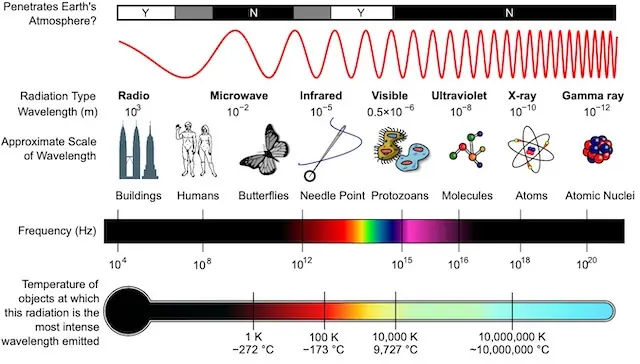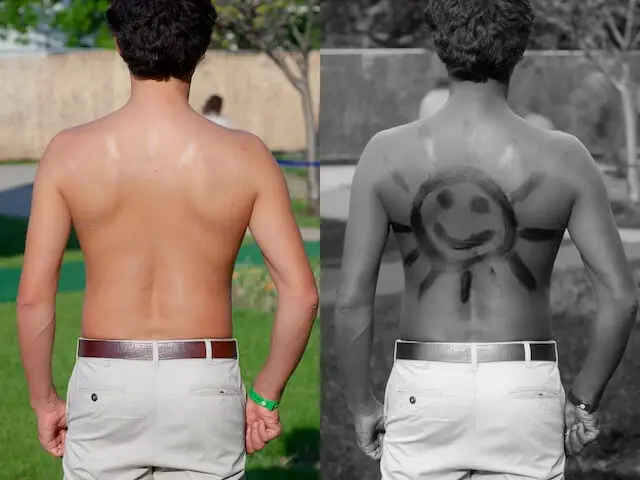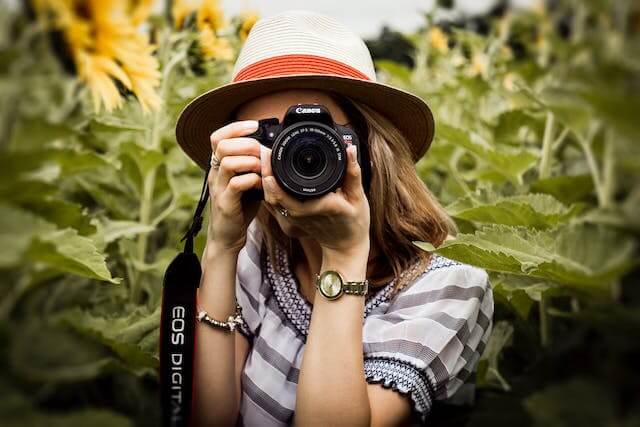Photography is not the only means to capture our world; it is undoubtedly among the most practical things.
Any your hobbies, equipment, or aspirations, a good understanding of the fundamentals is vital for obtaining better pictures and developing your skills.
One of the most crucial aspects any novice photographer should learn before pursuing this career is light.
When mentioning light, we often refer to visible light in our eyes. However, its only a part of the electromagnetic radiation spectrum in photography.
This spectrum includes sun radiation, gamma waves, or radio waves. In this area, light may act as waves. So, what type of waves do photography use?
If you are also really into this field, its time to scroll down my post to get an in-depth explanation!
Table of Contents
What Type Of Waves Do Photography Use?
The waves that photographers use in photography consist of ultraviolet light, X-rays, and gamma rays.
Ultraviolet
Ultraviolet light (UV) accounts for about 5 percent of the overall light in the world. UVA, UVB, and UVC are the three parts of this spectrum.
Apart from sunlight, UV light sources include fluorescent bulbs, welding arcs, tanning beds, and LEDs.
Gamma Rays
This wave type, also known as gamma radiation, is a piercing type of electromagnetic radiation that results from atomic nuclei decaying radioactively.
It comprises electromagnetic waves with shorter wavelengths than X-rays, on average.
Natural sources of these rays that come from Earth are caused by secondary radiation and radioactive decay from air interactions with gravitational wave particles.
X-Rays
An X-ray, also called X-radiation, is a piercing type of high-energy electromagnetic radiation.
Most have wavelengths between 10 picometers and 10 nanometers or frequencies between 30 petahertz and 30 exahertz.
Wavelengths of X-rays are generally longer than gamma rays but shorter than Ultraviolet light rays.
The most common application of X-rays is to look for fractures, but there are other purposes.
Lets look through the table below to get an overview:
| Wave type | Source(s) | Detector example (s) |
| Ultraviolet (UV) | sun, lamps, gas discharge | causing fluorescence in various items, film |
| X-ray | electrons striking a metal object at high speeds | photographic film |
| Gamma-ray | decaying radioactive nuclei | GM tube, photographic film, |

How To Do Ultraviolet Photography?
If you are interested in Ultraviolet photography and want to take some pictures using this style, lets refer to the following guides!
Understand Different Types of Ultraviolet Photography
Reflected UV Photography
Its crucial to illuminate your subject using specialized Ultraviolet photography lamps, light bulbs, or sunlight while taking reflected ultraviolet photos.
After that, you must utilize a unique filter and mount it on the cameras lens.
It should permit UV light to pass while obstructing visible light and IR. If not, it will be tough to spot crucial features in your photographs.
Choose a camera allowing you to capture pictures like these by paying close attention to versions with detachable IR and UV blocking filters.
Use cameras specifically for shooting UV pictures if you have a bigger budget.

UV-Induced Fluorescence Photography
Similar to the previous technique, UV fluorescence photography includes pictures of things in Ultraviolet rays.
Only a specific filter that filters UV or IR radiation while allowing visible light to get to your cameras sensor constitutes the only distinction.
Considering that visible light must be captured, you may choose any lens or camera to take these pictures.
If you need the best quality images, consider where you will capture them. This style is ideal for photographers who work in studios with a dark context.

Choose the Right Equipment
Below is a list of virtual devices you should have to do this photography style:
Camera
Like infrared photography, UV photography will be difficult without specialized equipment.
Your decision will vary depending on the kind of UV photos you desire.
Manufacturers have released a wide range of cameras designed specifically for UV photography.
A full-spectrum camera is also an option. Thanks to it, you wont need any other tools to take these pictures.
Lenses
A protective anti-UV layer shields the front component of recently launched lenses.
This shield enables longer UV wavelengths to penetrate the sensor while blocking shorter wavelengths.
For this reason, you must buy dedicated lenses to enable UV rays to get to your cameras sensor.
Filters
You must purchase an Ultraviolet pass filter for the front of the lens since your camera cannot function as a full-spectrum one.
You can consider UV transmitting bandpass filters as they allow you to take pictures with excellent detail.
Lighting
Choosing the right camera equipment for UV photography is among the most crucial factors to consider.
Its essential to make sure that the subject is lighted by direct sunshine before taking such photos.

Utilize Appropriate Camera Settings
White balance
UV photography allows you to record invisible radiation to the human eye.
Therefore, it is difficult to choose the ideal WB at the outset. Photographers frequently use the gray chart to modify this setting.
Composition & focus
Make a balanced layout within your frame using the viewfinder and concentrate on the subjects.
For focusing, it is preferable to utilize a camera that enables live view. These devices are equipped with UV-sensitive sensors.
How To Do X-Rays Photography?
Unlike ultraviolet photography, you cant take pictures of X-rays with a camera. Here are some considerations before starting this art!
Find X-Ray Machines
Doctors always have these machines. However, if you want to use them, you must get their permission.
Besides, make sure the machines you use should have proper voltage settings.
Consider Safety First
There are substantial health concerns associated with using x-ray equipment.
These rays can harm your reproductive tissues, skin, thyroid, and other body organs without protection.
A wall between an x-ray machine and the photographers can protect them from potential harm.
Apply The Right Technique
Before taking images, you select the appropriate value for voltage and electric charge. These values vary depending on the subjects you plan to capture.
Edit X-Ray Photographs
DICOM files are the name given to the x-ray equipment output pictures. Medical picture storage, interchange, and transmission are all done via DICOM.
However, these files may be converted into PSD and TIF in Photoshop and handled similarly to conventional photos.
You may keep your DICOM pictures as grayscale files or get artistic and color-correct them once youve converted them into formats you can modify in Photoshop.
Consider experimenting with various blend modes in the layers panel if you choose to stylize them.

How To Do Gamma Rays Photography?
Photographers use gamma rays to edit their products rather than taking pictures. Below are some essential factors to know about their usage!
Gamma correction regulates an images general brightness. Inadequately adjusted images may appear overly dark or bleached off.
The brightness and the proportions of green, red, and blue are affected by changing the degree of gamma correction.
Gamma is a photography term that describes how pictures appear on computer displays.
The notion is crucial to understand since the objective is to create digital images that appear excellent on uncalibrated and calibrated monitors.
Lower gamma results in brighter-looking shadows and may provide a smoother, washed-out picture, making it more challenging to perceive brighter highlights.
Perceiving details in shadows with a higher gamma may be more challenging.
You may adjust picture quality to suit your preferences using the various gamma settings that specific displays offer.

The Bottom Line
What type of waves do photography use? The primary waves used in this art include Ultraviolet light, gamma rays, and X-rays.
Each type has its outstanding features to make your photographs unique. Depending on your purpose, you can select the best-suited one.
If you have further concerns, please comment below! Thanks for taking the time to follow this post!

